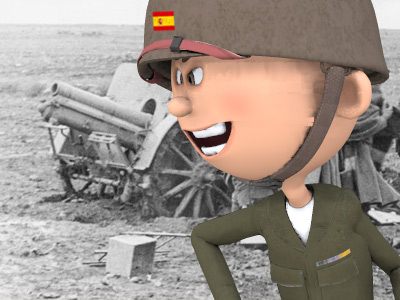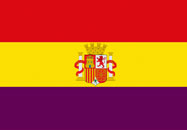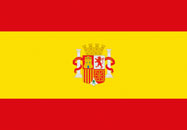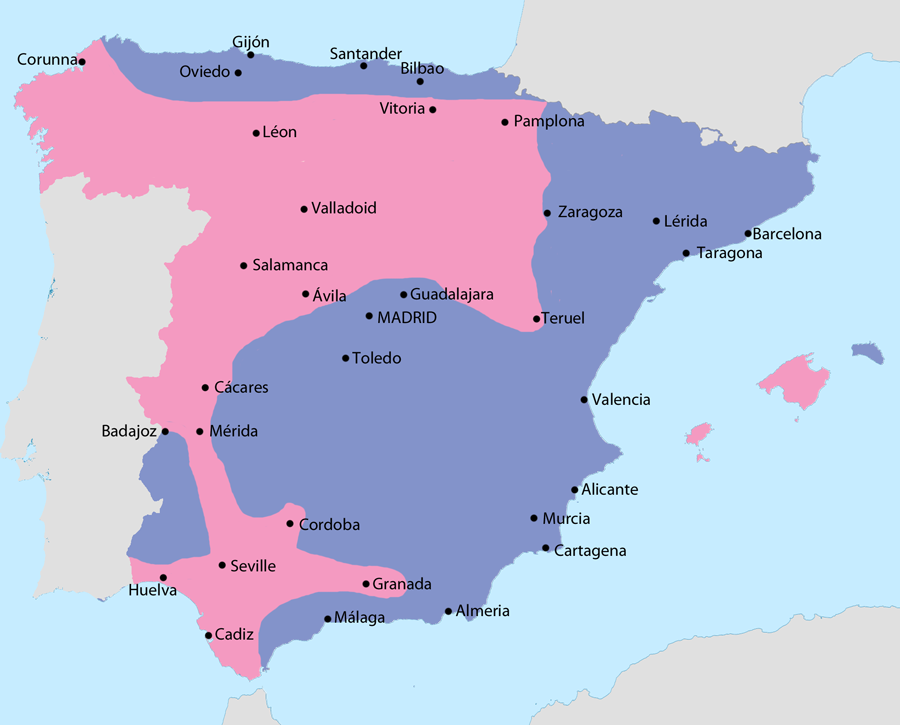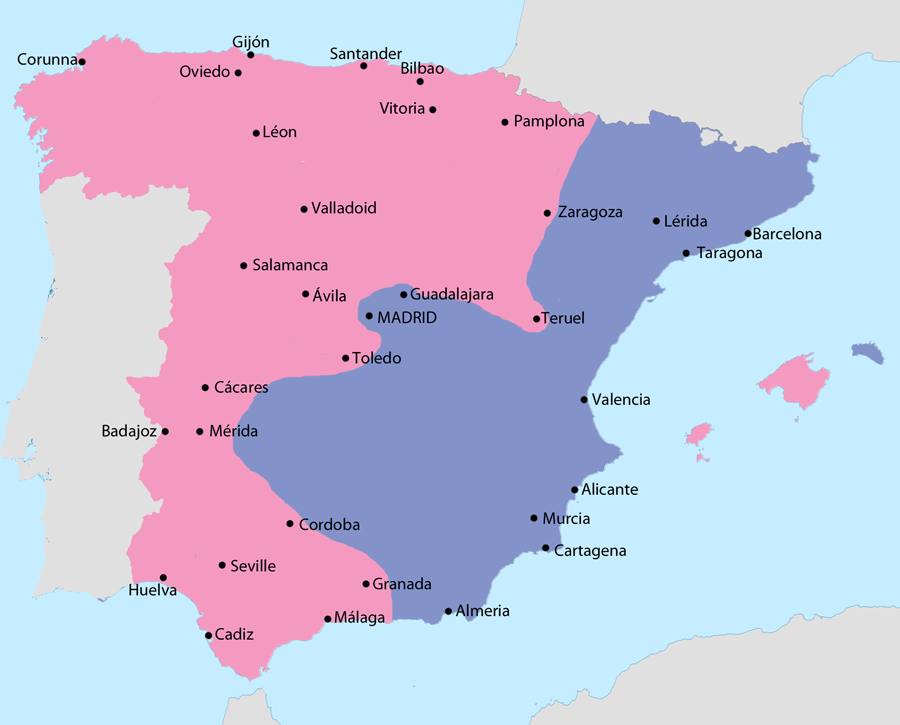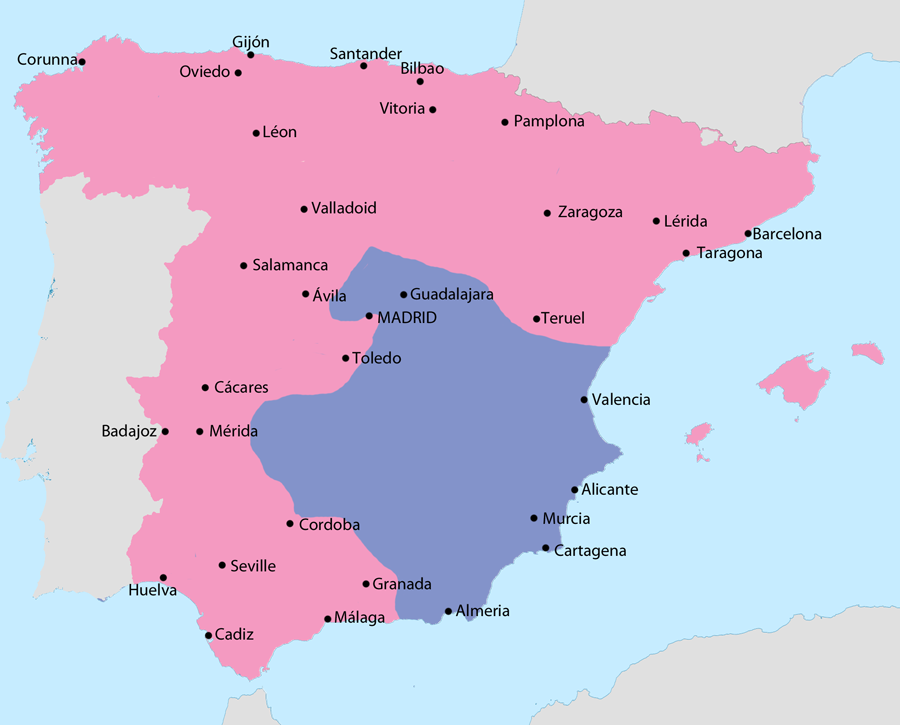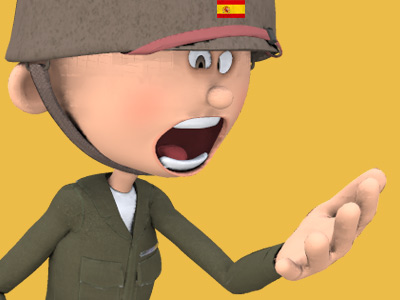Spanish Civil War (1936 to 1939)
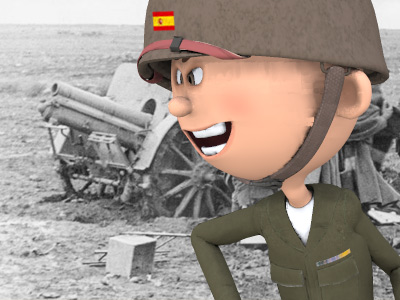
1938
The Battle of Teruel was an important confrontation. The city, which had formerly belonged to the Nationalists, was conquered by Republicans in January. The Francoist troops launched an offensive and recovered the city by 22 February, but Franco was forced to rely heavily on German and Italian air support.
On 7 March, Nationalists launched the Aragon Offensive, and by 14 April they had pushed through to the Mediterranean, cutting the Republican-held portion of Spain in two. The Republican government attempted to sue for peace in May, but Franco demanded unconditional surrender, and the war raged on. In July, the Nationalist army pressed southward from Teruel and south along the coast toward the capital of the Republic at Valencia, but was halted in heavy fighting along the XYZ Line, a system of fortifications defending Valencia.
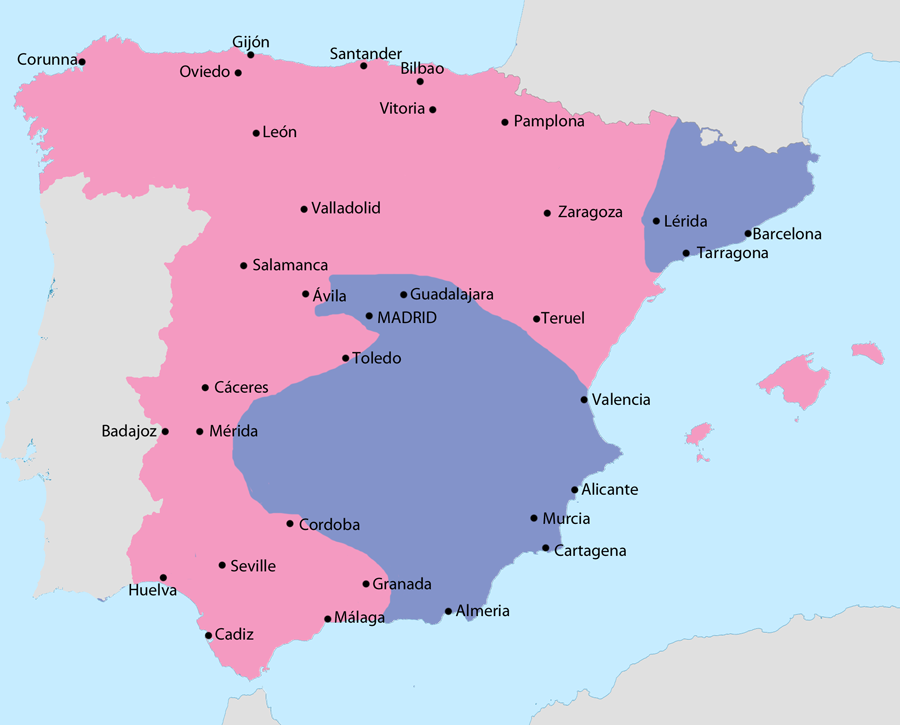
Map showing Spain in July 1938
(Pink) Area under Nationalist control
(Purple) Area under Republican control
The Republican government then launched an all-out campaign to reconnect their territory in the Battle of the Ebro, from 24 July until 26 November, where Franco personally took command. The campaign was unsuccessful, and was undermined by the Franco-British appeasement of Hitler in Munich. The agreement with Britain effectively destroyed Republican morale by ending hope of an anti-fascist alliance with Western powers. The retreat from the Ebro all but determined the final outcome of the war. Eight days before the new year, Franco threw massive forces into an invasion of Catalonia.
HISTORY

RESOURCES
This article uses material from the Wikipedia article "Spanish Civil War", which is released under the Creative Commons Attribution-Share-Alike License 3.0.
© Stories Preschool. All Rights Reserved.
